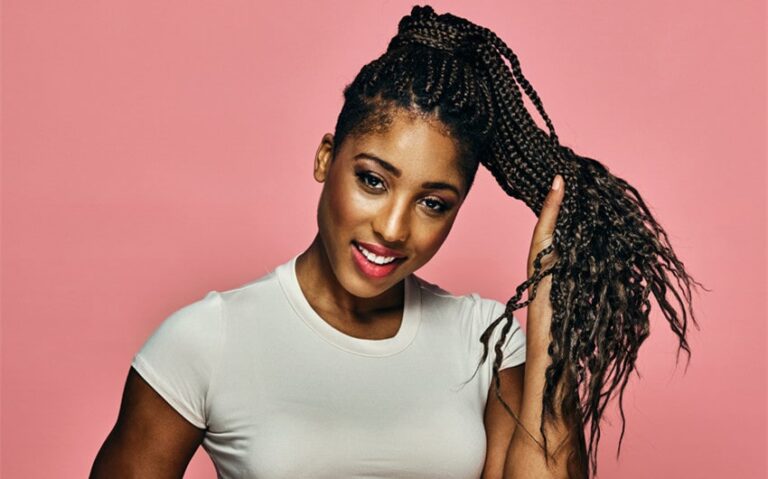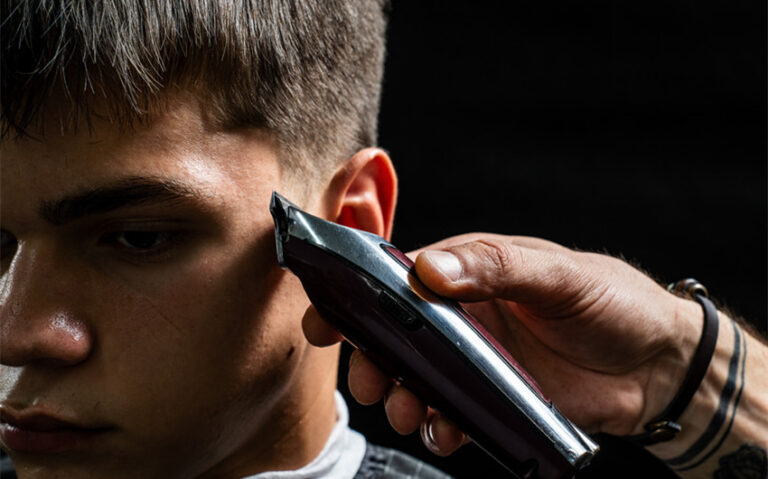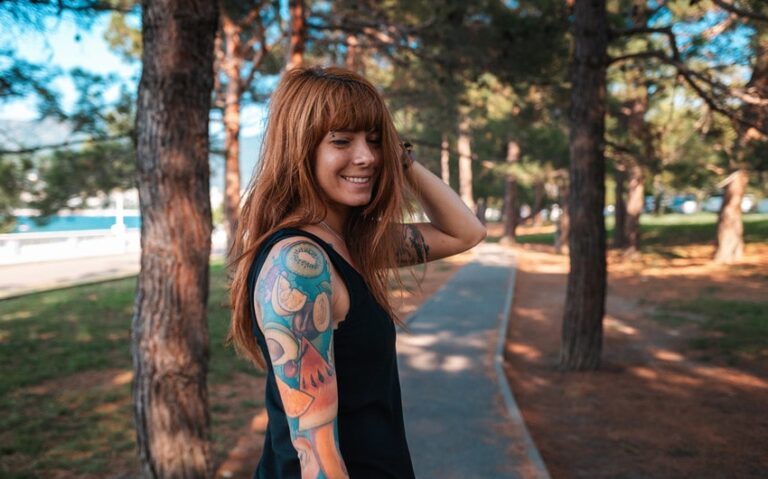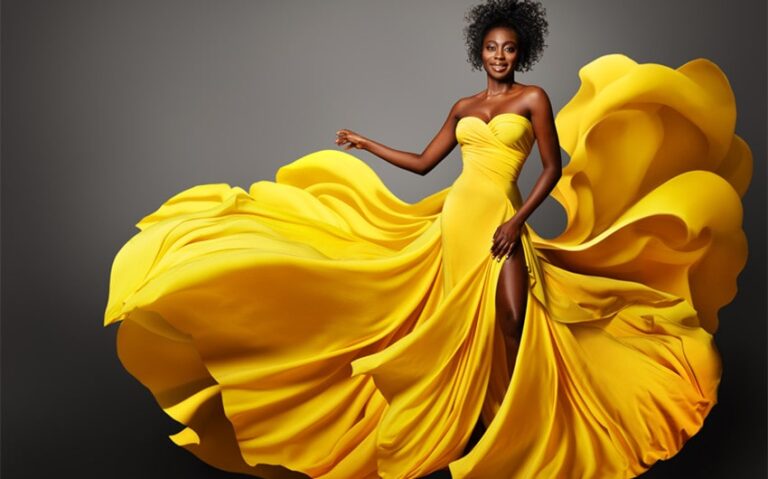Explore 10 Stylish Types of Fades Perfect for Any Occasion
When it comes to choosing a haircut that’s both stylish and versatile, fade haircuts are a top choice. With so many types of fades to choose from, you can easily find a style that suits your hair type, face shape, and personal preference.
Whether you prefer a subtle low fade or a bold high fade, each option offers a unique look that can be tailored to fit your lifestyle. In this article, we’ll explore some of the most popular types of fades, helping you discover the perfect cut for your next trip to the barber.
What is a Fade Haircut?
A fade haircut is a popular style that features a seamless transition in hair length from short to long, creating a gradient effect that fades out smoothly. The fade starts at the bottom of the hairline, around the ears and neck, and gradually tapers upward, blending the shorter hair into the longer hair on top. This gradual decrease in length gives the haircut its characteristic “faded” look.
Key Elements of a Fade Haircut
1. Gradual Tapering:
The most defining feature of a fade haircut is the gradual tapering of hair length. This is achieved by using clippers with varying guard sizes, starting with the shortest guard at the base of the hairline and moving to longer guards as you work your way up the head. The goal is to create a smooth, even transition without any harsh lines, resulting in a clean and polished appearance.
2. Blending Techniques:
Blending is crucial to achieving a well-executed fade. Barbers use techniques such as clipper-over-comb, scissor-over-comb, or freehand clippering to ensure the transition from short to long hair is flawless. The blending process eliminates any visible lines between different lengths, giving the fade its signature seamless look.
3. Versatility:
One of the reasons fade haircuts are so popular is their versatility. Fades can be customized to suit different hair types, textures, and personal styles. Whether you have straight, wavy, curly, or coily hair, there’s a fade style that can complement your natural texture. Additionally, fades can be paired with various hairstyles on top, from classic comb-overs and pompadours to modern quiffs and textured crops.
Popular Types of Fades
Fade haircuts come in various styles, each offering a unique look that can be tailored to suit different preferences, hair types, and face shapes. Here’s an expanded overview of some of the most popular types of fades, complete with key characteristics, who they’re best suited for, and how they can be styled.
1. Low Fade
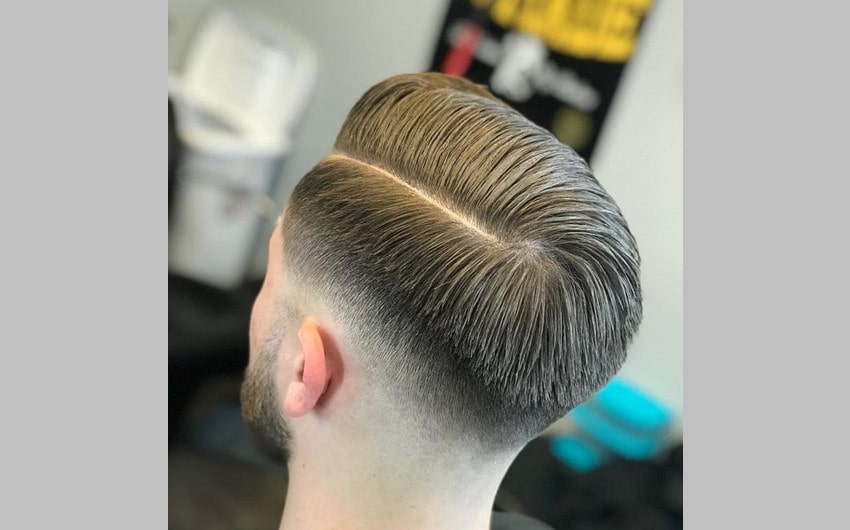
Image source: Pinterest
Key Characteristics:
The low fade is a subtle and conservative option where the fade begins just above the ears and gradually tapers down towards the neck. The transition is smooth, creating a clean and polished look that isn’t overly dramatic. The low fade leaves more length on the sides and back, making it a versatile choice that works well with various hairstyles on top.
Best For:
The low fade is ideal for those who want a more understated look. It’s perfect for professionals or anyone who prefers a classic style that doesn’t draw too much attention but still looks sharp and well-groomed. It works well with both straight and wavy hair types and can be paired with styles like side parts, pompadours, or even curly tops.
Styling Tips:
To maintain the clean look of a low fade, regular trims are essential. Styling the top with a bit of pomade or gel can enhance the overall appearance, giving it a polished finish. This fade pairs well with a neatly groomed beard or clean-shaven look, depending on personal preference.
2. Mid Fade

Image source: Pinterest
Key Characteristics:
The mid fade sits between the low and high fade, offering a balanced look that starts around the middle of the head. The fade begins higher up than a low fade but not as high as a high fade, creating a versatile style that can be adapted to both conservative and modern looks. The mid fade provides a noticeable contrast between the top and sides without being too extreme.
Best For:
This fade is suitable for those who want a balanced, versatile haircut. It’s a great option for people who want a little more edge than a low fade but aren’t ready to commit to the boldness of a high fade. The mid fade works well with most hair types and lengths, making it a popular choice for a wide range of styles, from quiffs to textured crops.
Styling Tips:
The mid fade allows for more styling freedom on top. Depending on the length and texture, you can experiment with different looks, from sleek and professional to tousled and casual. Regular maintenance is key to keeping the fade looking sharp, especially as the hair grows out.
3. High Fade
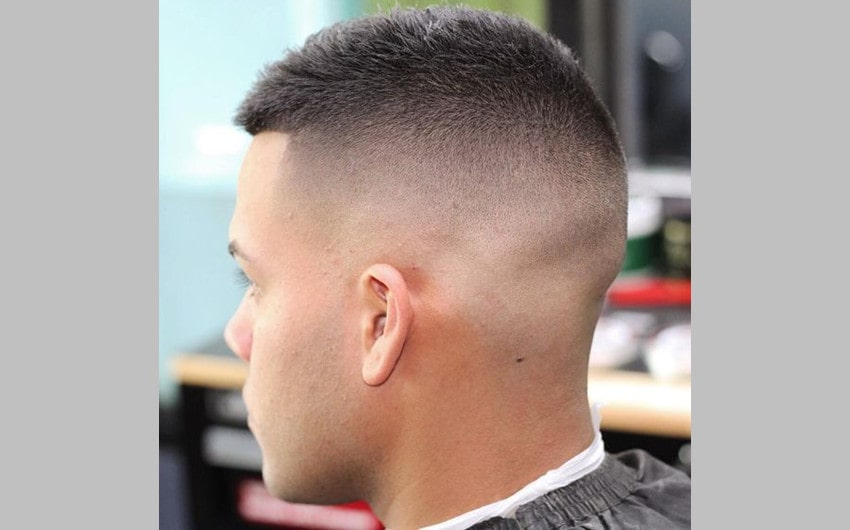
Image source: Pinterest
Key Characteristics:
The high fade is a bold and dramatic option where the fade starts near the temples or even higher, close to the top of the head. This style creates a sharp contrast between the longer hair on top and the closely cropped sides. The high fade is ideal for those who want to make a statement with their haircut, as it draws attention to the top of the head and can accentuate certain facial features.
Best For:
The high fade is perfect for individuals who enjoy edgy, modern styles. It works well with a variety of hair types but is especially popular among those with thicker hair that can hold its shape on top. This fade is often paired with hairstyles that require volume or height, such as pompadours, faux hawks, or high tops.
Styling Tips:
To achieve the best results with a high fade, regular visits to the barber are crucial to maintain the sharp contrast. Styling products like pomade, wax, or gel can help add structure and hold to the top, ensuring the hair stays in place throughout the day.
4. Skin Fade
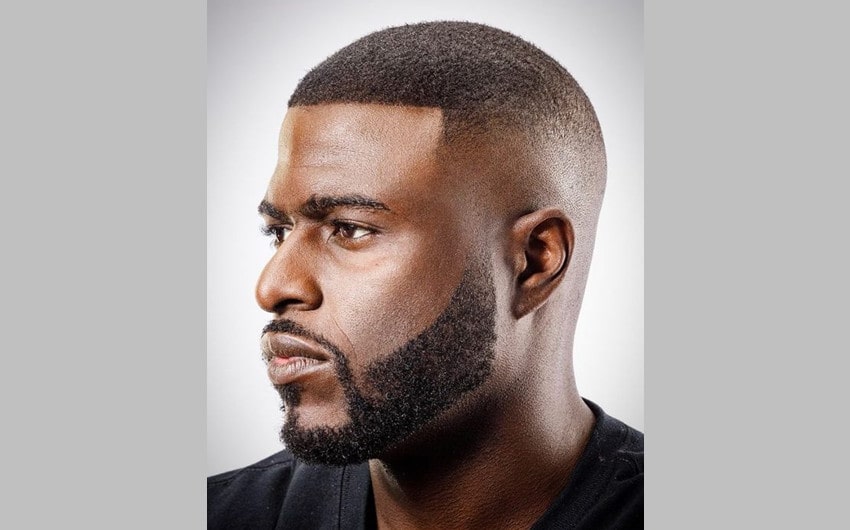
Image source: Pinterest
Key Characteristics:
Also known as a bald fade, the skin fade takes the fade down to the skin, creating a clean, close shave on the sides and back. The fade starts from the skin and gradually blends into longer hair as it moves up the head. This fade is characterized by its sharp, crisp lines and high contrast between the skin and the hair on top.
Best For:
The skin fade is ideal for those who prefer a clean, high-contrast look. It’s a great choice for people who want a low-maintenance style that looks fresh and sharp. The skin fade works well with most hair types but is especially effective for those with thicker hair on top, as the contrast enhances the overall style.
Styling Tips:
Given the close shave, a skin fade requires regular upkeep to maintain its sharp appearance. Using a razor or electric trimmer to keep the sides smooth can prolong the freshness of the fade. Styling the top with a strong-hold product will keep the look cohesive and polished.
5. Drop Fade

Image source: Pinterest
Key Characteristics:
The drop fade is a unique variation where the fade curves down behind the ears and follows the natural shape of the head. Unlike the standard fade, which remains even all the way around, the drop fade “drops” as it reaches the back, creating a more customized, sculpted appearance. This fade adds a distinctive element to any hairstyle.
Best For:
The drop fade is best suited for those who want a modern, creative look. It’s an excellent choice for individuals with rounder head shapes, as the drop can add definition and structure. The drop fade works well with curly, wavy, or straight hair, and can be paired with various styles on top, such as mohawks or curly tops.
Styling Tips:
To enhance the shape of the drop fade, consider pairing it with a hairstyle that complements the curved line, like a curly mohawk or a textured quiff. Regular maintenance is key to keeping the fade’s shape intact, and styling products can help define the hair on top for a more finished look.
6. Burst Fade
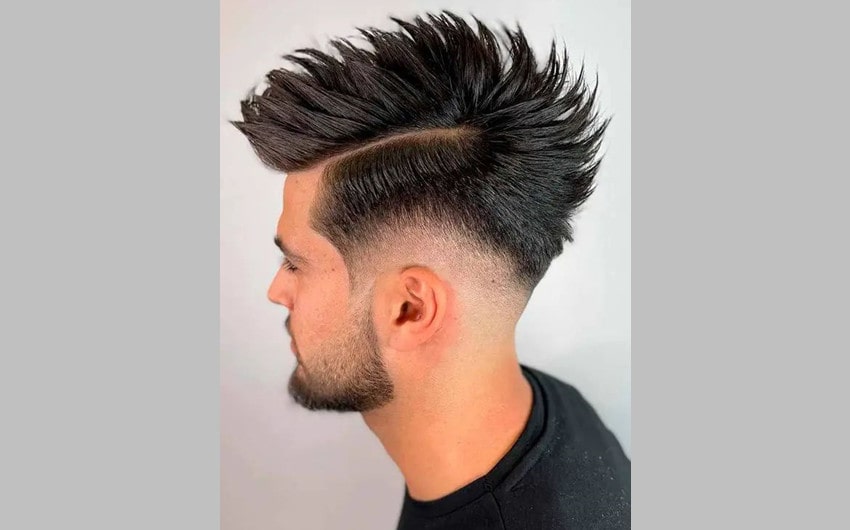
Image source: Pinterest
Key Characteristics:
The burst fade is characterized by its rounded, “bursting” effect around the ear, with the fade radiating out in a circular pattern. This fade creates a distinct look that is often paired with a mohawk or other statement styles. The burst fade adds a dynamic, edgy element to any haircut.
Best For:
The burst fade is ideal for those who enjoy bold, attention-grabbing hairstyles. It’s particularly popular among individuals with thicker, curlier hair, as the burst effect complements the natural volume and texture. This fade is often chosen by those who want to stand out with a unique, modern style.
Styling Tips:
The burst fade is often paired with a mohawk or other high-volume styles. Keeping the top well-styled with a strong-hold product will ensure the look stays cohesive. Regular trims are necessary to maintain the rounded shape of the fade and keep the overall style looking sharp.
7. Taper Fade
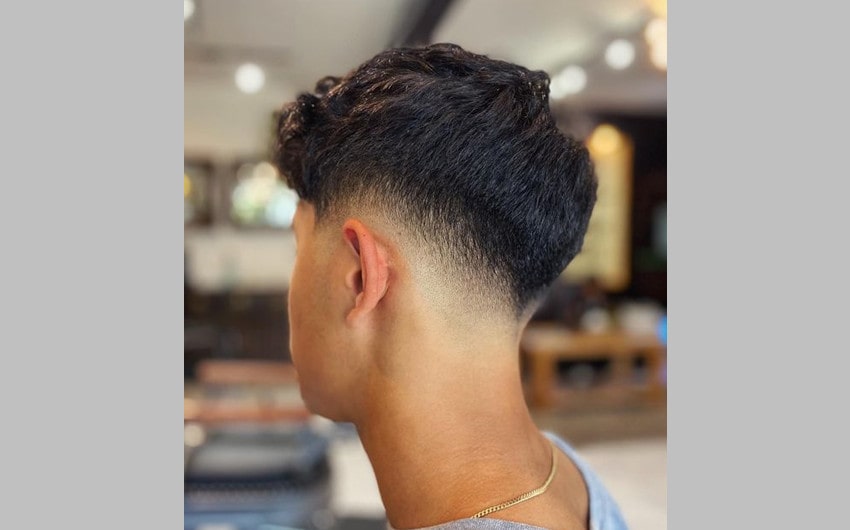
Image source: Pinterest
Key Characteristics:
The taper fade is a classic style where the hair gradually tapers down around the temples and nape of the neck, while the rest of the hair remains longer. The taper fade is often more subtle than other fades, providing a clean and polished look that’s suitable for both casual and formal settings. It’s characterized by its gradual transition from longer hair on top to shorter hair on the sides and back.
Best For:
The taper fade is perfect for those who prefer a traditional, low-maintenance haircut that still looks stylish and well-groomed. It’s a great option for professionals or anyone who needs a versatile style that can easily transition from work to play. This fade works well with a variety of hair types and lengths, making it a popular choice for those who want a classic, timeless look.
Styling Tips:
The taper fade requires minimal upkeep, making it a great option for those with busy schedules. Using a light styling product to keep the hair on top neat and in place is usually sufficient. Regular trims will help maintain the clean lines and polished appearance of the taper fade.
8. Temple Fade
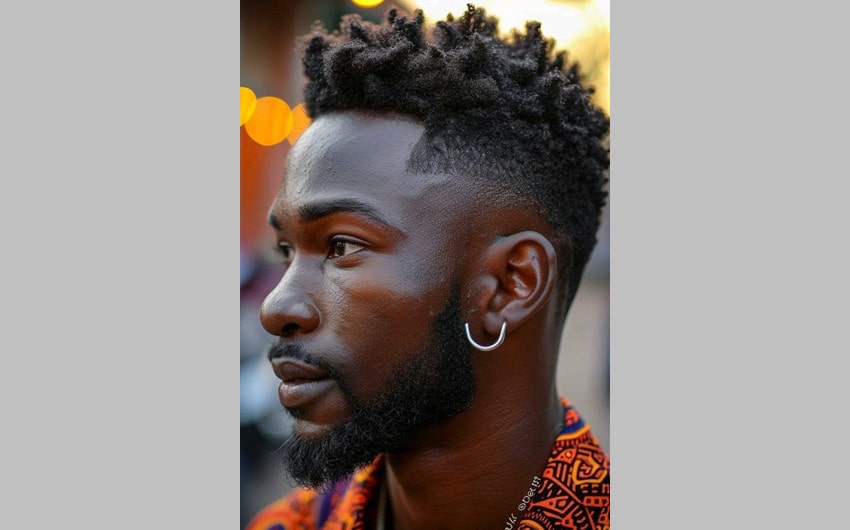
Image source: Pinterest
Key Characteristics:
The temple fade, also known as the Brooklyn fade, focuses on a sharp fade around the temples, creating a clean, angular look. The fade typically starts high at the temples and tapers down around the ears and neck, offering a distinct, well-defined appearance. This fade can be combined with various lengths on top, from short crops to longer, voluminous styles.
Best For:
The temple fade is ideal for those who want a clean, sharp look that frames the face. It’s especially flattering for individuals with angular or square face shapes, as the sharp lines of the fade accentuate the jawline and cheekbones. This fade is versatile and works well with a variety of hair types and styles.
Styling Tips:
To maintain the sharp lines of the temple fade, regular visits to the barber are essential. This fade pairs well with a neat beard or stubble, which can further enhance the overall look. Styling the top with a pomade or wax can add definition and hold, keeping the style in place throughout the day.
9. Shadow Fade
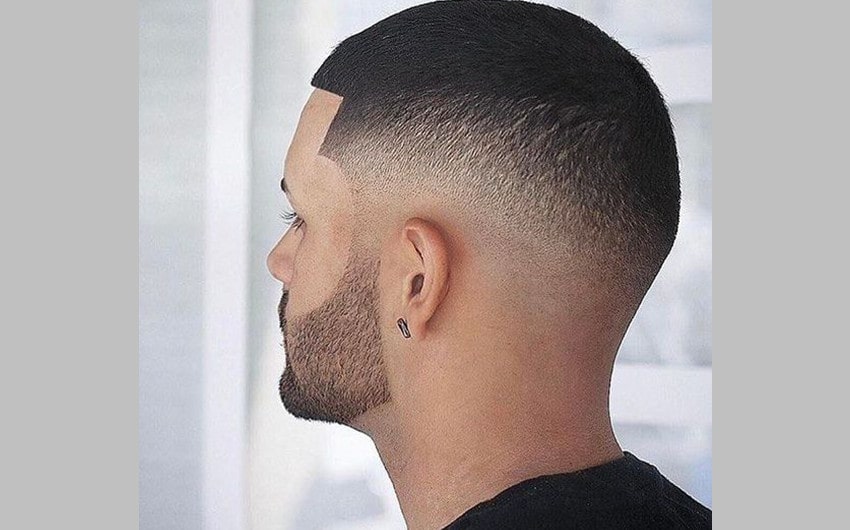
Image source: Pinterest
Key Characteristics:
The shadow fade is a more subtle version of the traditional fade, where the transition from short to long hair is more gradual and less pronounced. The fade creates a “shadow” effect, with the hair appearing to blend seamlessly from the sides into the top. This fade is perfect for those who want a softer, more understated look.
Best For:
The shadow fade is ideal for those who prefer a more natural, blended look. It’s a great option for individuals with straight or wavy hair, as the fade’s subtlety enhances the natural texture without creating harsh lines. The shadow fade works well with both short and medium-length hairstyles, offering versatility and ease of maintenance.
Styling Tips:
To keep the shadow fade looking its best, regular trims are necessary to maintain the smooth transition. Using a lightweight styling product can help enhance the natural texture of the hair on top, giving the overall look a polished finish.
10. Blowout Fade

Image source: Pinterest
Key Characteristics:
The blowout fade is a style where the hair on top is left longer and styled upwards, creating a voluminous, “blown-out” effect. The sides and back are faded, providing a sharp contrast with the full, textured hair on top. This fade is perfect for those who want a bold, attention-grabbing hairstyle.
Best For:
The blowout fade is ideal for those with thicker hair that can hold volume. It’s a great choice for individuals who enjoy experimenting with bold, high-volume styles and want a haircut that makes a statement. This fade is particularly popular among younger individuals and those who enjoy a modern, edgy look.
Styling Tips:
Achieving the blowout effect requires the use of styling products like mousse, gel, or pomade to add volume and hold. Regular visits to the barber are necessary to maintain the fade and keep the style looking sharp. The blowout fade can be paired with a clean-shaven look or a neatly trimmed beard, depending on personal preference.


